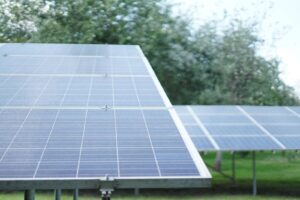
The Power of Silence: Managing On-Site Power Generator Noise
In 2005, Hurricane Wilma wiped out power across Florida causing businesses to close and grocery stores to lose inventory due to spoilage. Residents were left frustrated by long lines and limited food selections when dozens of grocery stores finally reopened after being out of power for days. An issue that may have been avoided with on-site power generation.

Power losses are common in areas prone to violent storms and hurricanes but even here in Canada, B.C. Hydro estimates the average Canadian will experience roughly 2.5 power outages a year. This can range from a few seconds or minutes to hours and sometimes even days. As seen during Hurricane Wilma, this can have a devastating impact on businesses so, it’s not surprising that there is great interest in on-site power generation for commercial, institutional and industrial sites. Following Hurricane Wilma, several major grocery chains invested in on-site power generators to avoid future losses.
Understanding On-Site Power Generation
 On-site power generation can be anything from peak-shaving generators to solar panels. For example, a residential high-rise building could be interested in saving electricity costs by generating their own power. Whether it be to save on electricity costs or to ensure reliable power, on-site power generators may become a significant source of harmful and distracting noise.
On-site power generation can be anything from peak-shaving generators to solar panels. For example, a residential high-rise building could be interested in saving electricity costs by generating their own power. Whether it be to save on electricity costs or to ensure reliable power, on-site power generators may become a significant source of harmful and distracting noise.
Without proper noise control design, large generators can be so loud it interferes with conversation hundreds of feet away. To compound the issue, often, power generators on a grocery store or mall are located close to residences so the noise is a significant issue. It’s why some facilities have shied away from installing power generators despite the potential benefits. But this equipment can be quieter than people think. The Aercoustics approach can range from off-the-shelf noise controls to collaborations with mechanical consultants and manufacturers for custom noise mitigation. Quiet, permittable and reliable on-site power generation is possible.
Managing Noise for On-Site Power Generation
Knowing the source of the generator noise can help experts determine the best options for noise mitigation. Noise from the generator can be airborne or structure-borne.
Airborne noise consists of sound waves emitted from the generator. Acoustical barriers or enclosures can help mitigate some of this noise emission. This may require upgraded wall construction with thicker steel and sandwich panels. The specially designed enclosures by Aercoustics are on par with military grade silencing and the specs are in line with what the U.S. military requires for units that need to be concealed. Many generator suppliers do offer sound enclosures but few are good enough to reduce noise to the levels required for continuous use near residential areas.
Structure-borne sound is caused by vibrations that travel through the generator and emit audible noise. Typically, this can be managed by applying damping materials around the on-site generator equipment or inserting absorptive lining on the inside of the generator space to reduce vibration.
There are usually four noise sources that must be dealt with:
- the combustion exhaust stack
- the enclosure casing
- the air openings (intake and discharge)
- and if applicable remote radiator cooling fans
These each must be dealt with in different ways but the overall noise control design and system need to work together in harmony. The solution applied will depend on each situation but possible options include specially engineered power generation equipment with silencers or baffles or mufflers. Air openings for intake and discharge must be silenced in a way that doesn’t interfere with the air flow and cooling requirements.
The Importance of On-Site Power Generation
The benefits of an on-site power generator should not be clouded by concerns over noise. The noise can be managed effectively, increasing the potential for wider adoption in the future whether to save money on electricity costs or to ensure everything is business as usual even when disaster strikes.
